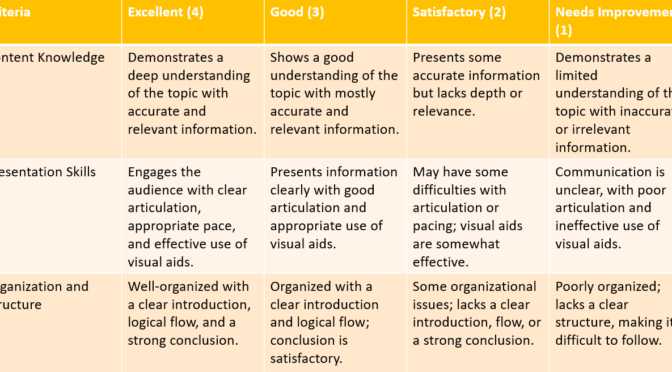Descriptors: Descriptions or characteristics for each level of performance help clarify what is expected at each level. Descriptors provide guidance to both students and evaluators about the qualities associated with different levels of achievement.
Weighting (Optional): Some rubrics assign weights or importance to different criteria, reflecting their relative significance in the overall assessment. This can be useful when certain aspects of the task are considered more critical than others.
Scoring Scale: The scoring scale establishes the numerical or qualitative values associated with each level of performance. This scale may use numbers (e.g., 1-4) or labels (e.g., Excellent, Good, Satisfactory, Needs Improvement).
Also Visit: Prep with Harshita


